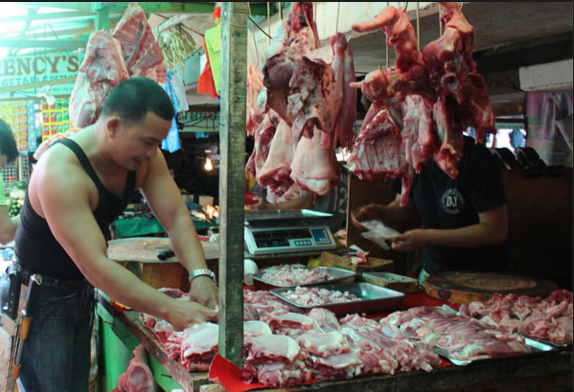MANILA, Philippines – Its price used to go up and then go down. But now, it just goes up continuously and Filipino consumers find it difficult to manage their budget for pork.
“Walang pagbabago, lalong tumataas. Talagang higpit sinturon ngayon [There’s no change, it keeps on rising. It’s really belt-tightening now],” said Edelberto Maso, who often goes to Nepa Q Mart in Quezon City to buy pork, his family’s usual viand, which is also what he cooks and packs for the meals of his three school children.
According to Maso, his P500-budget for pork used to be enough for one-and-a-half days’ supply. But now, that amount is no longer sufficient.
Market prices of porcine cuts such as pork belly and pork loin have increased by P30 a kilo and there are no signs that these will go down.
Besides consumers, sellers are also feeling the pinch of the continuous rise in pork prices, which they said only happened now.
“Dati tataas sampu, tapos bababa rin. Ngayon pataas na lang. Kaunti nalang kakatayin namin, kaunti bibilhin nila. ‘Yong mga lingguhang bumili budget P2000, madami.. Ngayon, kaunti na lang bibilhin nila,” said Edwin Mendoza.
[Prices used to increase by P10 and then go down. Now, it just goes up. We just slaughter a few pigs because they buy less now. Those who used to buy weekly with a budget of P2,000 now buy less.]
“Sobra taas n’ya. Biro mo kami wala na kaming kinikita, talagang walang wala na [Prices are too high. We no longer earn, really no earnings],” said Solidad Santos.
Pinoy pork consumption higher than world average
Lots of consumers are complaining about the rise in porcine prices because many Filipinos are pork eaters.
Each Pinoy eats an average of 14.2 kilograms of pork yearly, which is 1.8 kg more than the world’s average pork consumption, according to a 2015 data from the Organization for Economic Cooperation and Development (OECD).
The Philippines’ per capita pork consumption is higher than Thailand’s 10.9 kg and Malaysia’s 6.2 kg but lower than Japan’s 15 kg; Vietnam’s 29.1 kg; China’s 31.6 kg; and South Korea’s 28.4 kg, the same OECD data show.
Tight supply because of epidemic
Department of Agriculture (DA) Secretary Emmanuel Piñol attributes increasing pork prices to tight supply caused by the porcine epidemic diarrhea that attacked young pigs last year.
He said the rising prices could also be partly explained by the DA’s strict review of import permits that affected pork smugglers.
“There really is a shortage in the supply of pork not only in the Philippines but worldwide, the DA chief said.
“In fact, even when we already opened importation for about seven million kilos just to tide over, stopgap lang until September, wala pa rin eh, mahina pa rin, kaunti pa rin nag-aapply ng import permit, mataas rin kasi presyo sa labas,” added Piñol
[In fact, even when we already opened importation for about seven million kilos just to tide over, just as a stopgap until September, the shortage continued because only a few applied for import permit because prices abroad were also high.]
WATCH NEWS5’S VIDEO REPORT.

